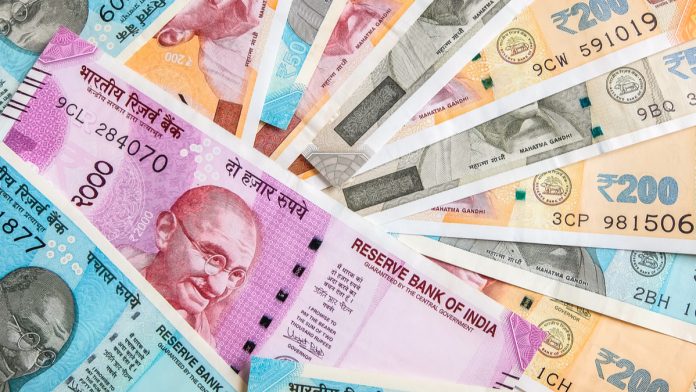- Indian Rupee (INR) rises from record low
- Indian fell to a record low on Friday
- US Dollar (USD) rises versus its major peers
- Raphael Bostic sees one rate cut this year.
The US Dollar Indian Rupee (USD/INR) exchange rate is falling after gains last week. The pair rose 0.9% in the previous session, settling on Friday at 83.58. At 17:00 UTC, USD/INR trades -0.22% at 83.40 and trades in a range of 83.36 to 84.60.
The Indian Rupee is rising against the USD, after hitting a record low on Friday, weighed down by broad weakness across Asian currencies. The Rupee is rising despite the government warning that India’s inflation and economic growth are at risk from the rise in oil prices caused by the escalating disputes in the Red Sea.
Around 80% of India’s merchandise trade with Europe passes through the Red Sea route, where missiles and drone attacks by Houthi militants may force ships to re-route.
The US Dollar is falling against the Rupee but rising against major peers. The US Dollar Index, which measures the greenback versus a basket of major currencies, trades at +0.24% at the time of writing at 104.89, after rising 1% last week.
The US dollar is extending gains from last week after less dovish comments from Atlanta Federal Reserve president Rafael Bostic, who repeated his previous expectation of just one rate cut this year.
Rafael Bostic considers that the resilient U.S. economy will prevent the Federal Reserve from being able to cut the cost of borrowing by far more than 25 basis points by the end of 2024.
His comments come after the Federal Reserve interest rate decision last week, where the Fed left rates on hold at a 22-year high of 5.25% to 5.5% but maintained guidance that it would cut interest rates three times this year.
The market had doubted that the Fed would be able to maintain this guidance given that inflation has been hotter than expected for the past two months.
Attention will be firmly on Friday’s core PCE data, which is the first preferred rate for inflation and could provide further clues about whether inflation continues to trend lower.





